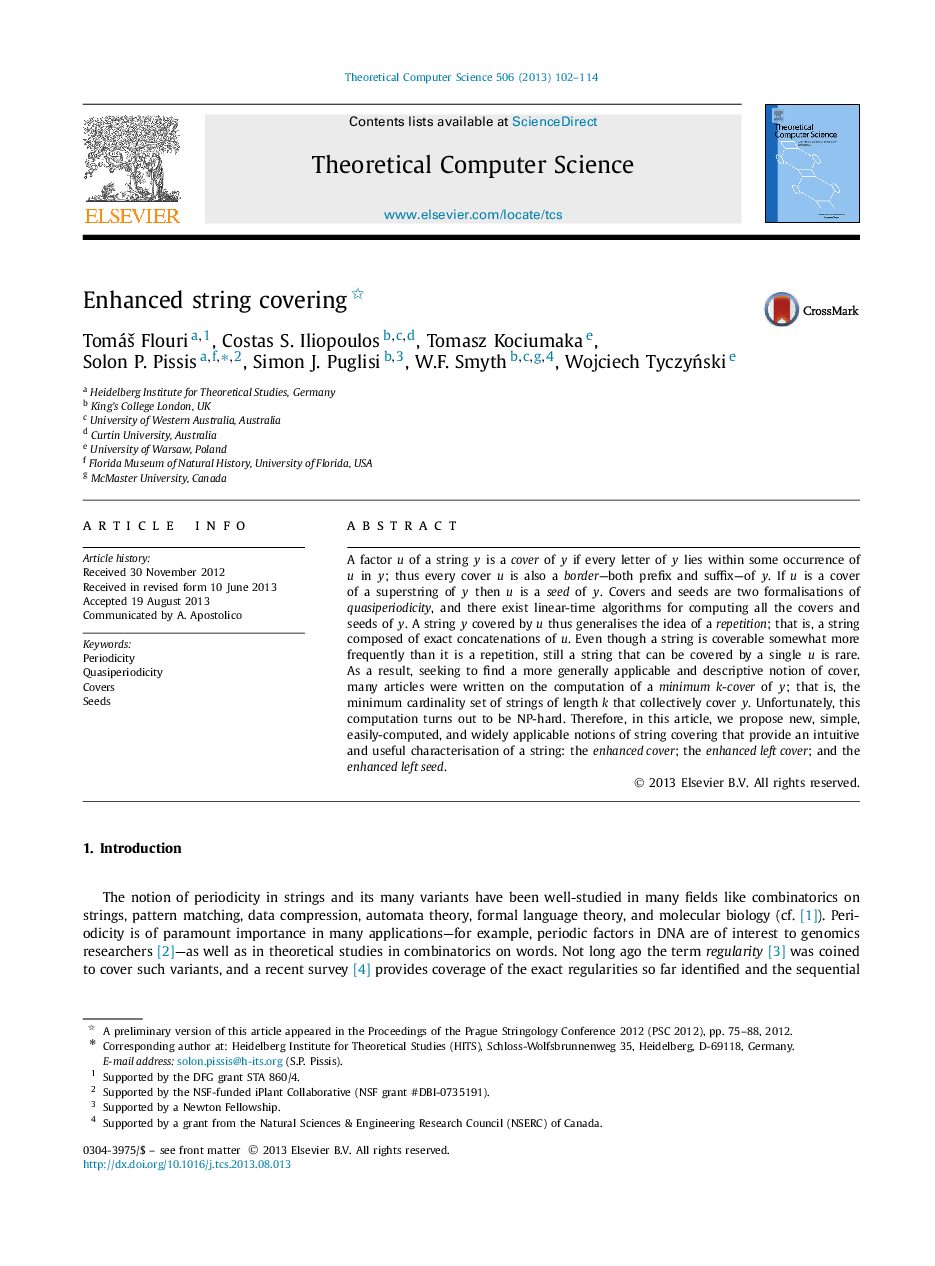| Article ID | Journal | Published Year | Pages | File Type |
|---|---|---|---|---|
| 438543 | Theoretical Computer Science | 2013 | 13 Pages |
A factor u of a string y is a cover of y if every letter of y lies within some occurrence of u in y; thus every cover u is also a border—both prefix and suffix—of y. If u is a cover of a superstring of y then u is a seed of y. Covers and seeds are two formalisations of quasiperiodicity, and there exist linear-time algorithms for computing all the covers and seeds of y. A string y covered by u thus generalises the idea of a repetition; that is, a string composed of exact concatenations of u. Even though a string is coverable somewhat more frequently than it is a repetition, still a string that can be covered by a single u is rare. As a result, seeking to find a more generally applicable and descriptive notion of cover, many articles were written on the computation of a minimum k-cover of y; that is, the minimum cardinality set of strings of length k that collectively cover y. Unfortunately, this computation turns out to be NP-hard. Therefore, in this article, we propose new, simple, easily-computed, and widely applicable notions of string covering that provide an intuitive and useful characterisation of a string: the enhanced cover; the enhanced left cover; and the enhanced left seed.
